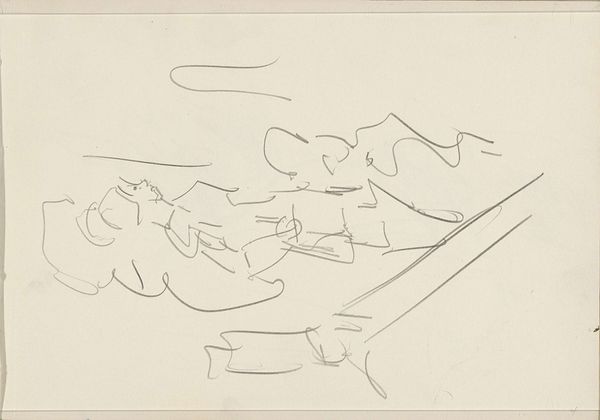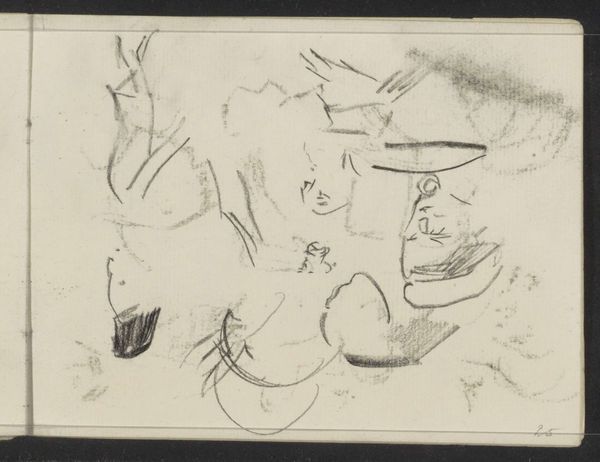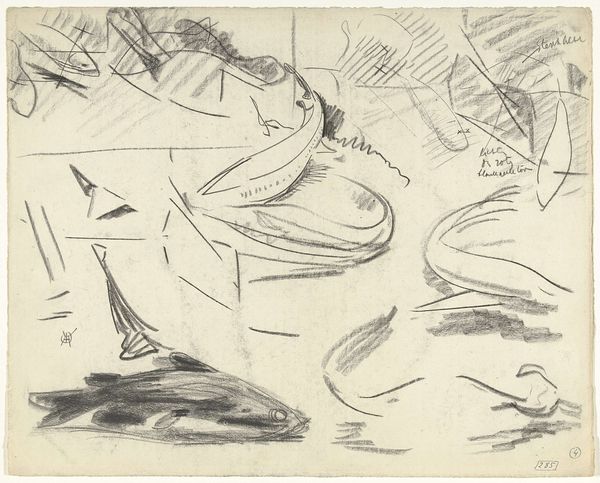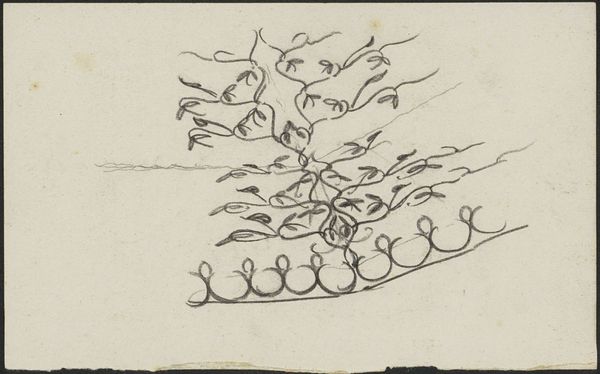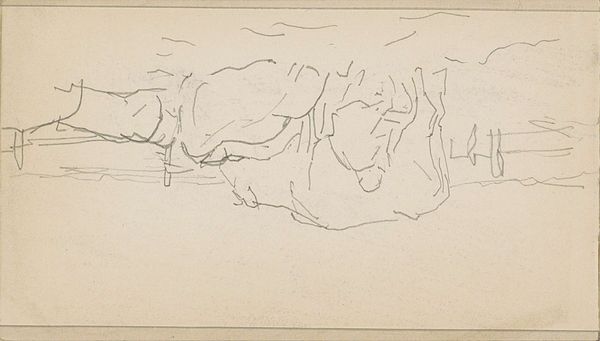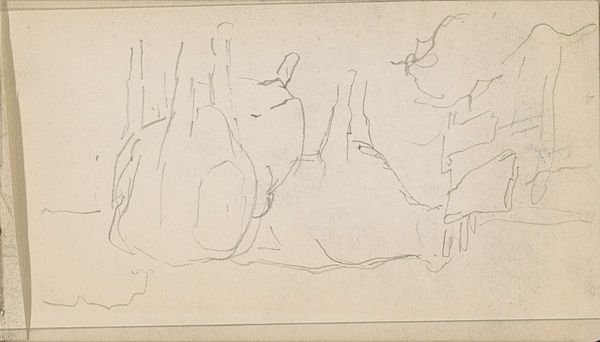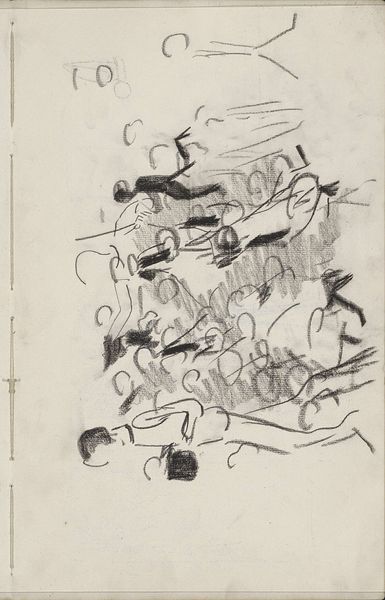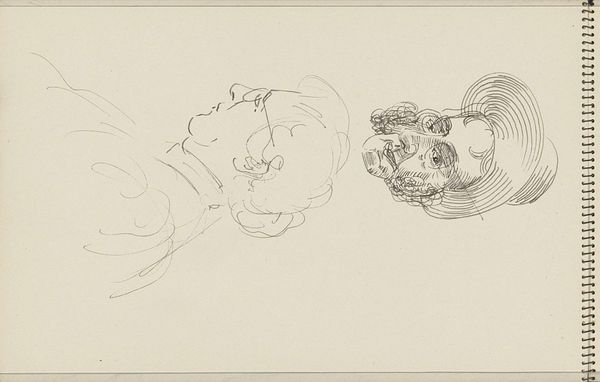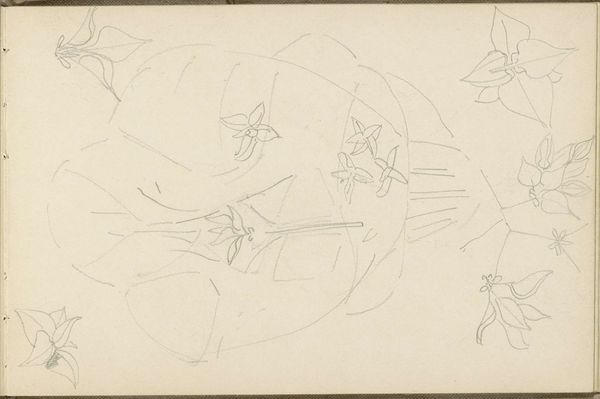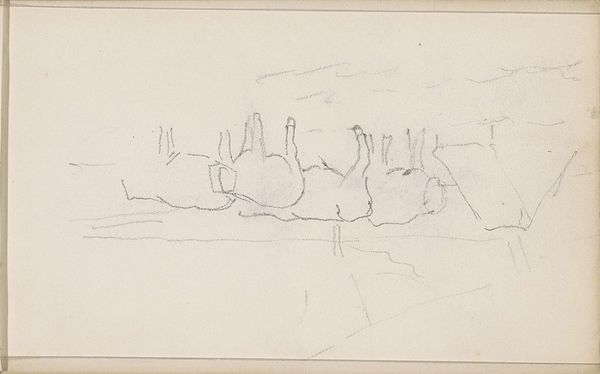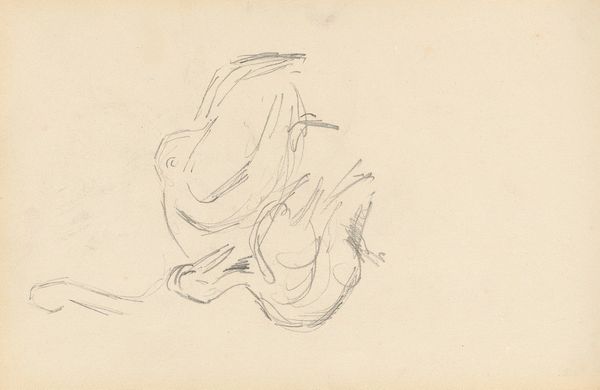
drawing, ink
#
drawing
#
organic
#
art-nouveau
#
childish illustration
#
pen sketch
#
cartoon sketch
#
ink line art
#
personal sketchbook
#
ink
#
ink drawing experimentation
#
pen-ink sketch
#
line
#
sketchbook drawing
#
sketchbook art
#
doodle art
Dimensions: height 101 mm, width 164 mm
Copyright: Rijks Museum: Open Domain
Editor: Here we have "Ornament met bladeren," or "Ornament with Leaves," created sometime between 1876 and 1924 by Gerrit Willem Dijsselhof, rendered in ink. It's deceptively simple, a quick sketch almost. What stands out to you? Curator: It's the *means* of production here that intrigue me. Ink on paper. Consider the social context: Dijsselhof, working in a period grappling with industrialization, chooses such direct, unpretentious materials. Editor: So, the *lack* of lavish material is the statement? Curator: Precisely. Think about what "ornament" usually implies—richness, detail, often expensive materials. Dijsselhof offers a counterpoint. These simple, almost mass-producible materials challenge conventional ideas around craft. Look at the way these sketches evoke both fine art and the aesthetics of printed textiles; a cheap way to embellish fabric perhaps. Are these leaves an assertion about labor and the value attributed to it? Editor: I never thought of it in those terms! It feels almost... democratizing? Making ornament accessible, breaking away from exclusive luxury? Curator: Absolutely! By utilizing ink, Dijsselhof seems to make the method for creation open to scrutiny and achievable by all. Consider too how paper itself became increasingly available through industrial production. Editor: It makes you wonder about the intended purpose of the drawing, and for whom, doesn't it? Perhaps a sketch to be distributed in pamphlets? Or wallpaper? Curator: Or maybe just an everyday sketchbook exercise, turning the very *act* of ornamentation into an accessible, personal form of expression. Editor: I see. I appreciate knowing that the availability of materials and its means of distribution influenced how one perceived value and challenged expectations.
Comments
No comments
Be the first to comment and join the conversation on the ultimate creative platform.

